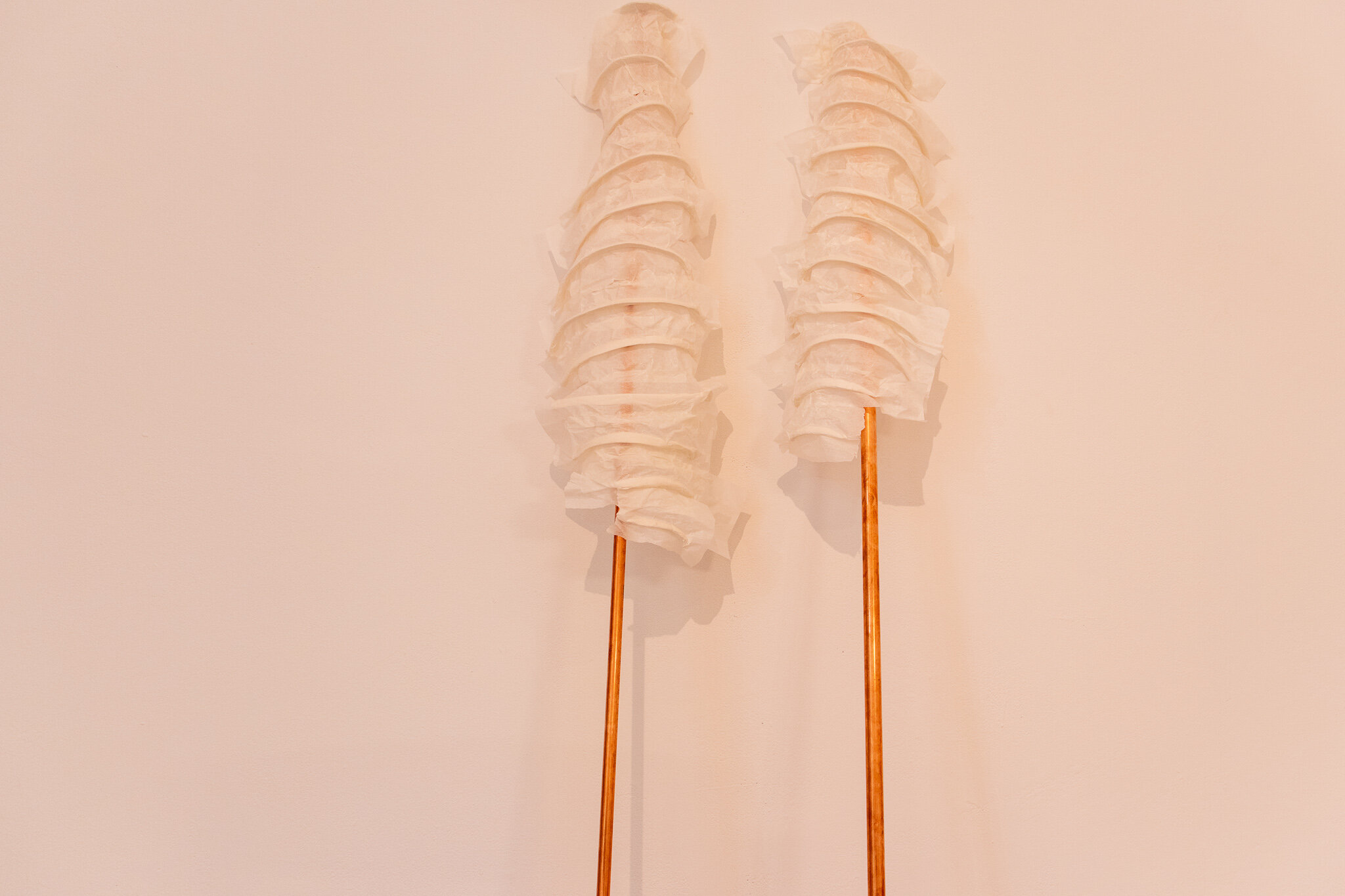Living in Displace



















Living in Displace
Living in Displace
Installation and performance, MFA Thesis Exhibition, Mason Gross Galleries, Rutgers University, 2020
Living in Displace is an interdisciplinary installation and performance that explores the psychological, material, and political dimensions of migration, labor, and domesticity. Through a carefully constructed environment composed of transformed retail furniture, found objects, sound, and body interactions, Cesar Valdes stages a meditation on displacement as both a personal experience and a cultural condition.
The installation centers around the air mattress as a symbol of transience—an object that embodies the provisional nature of dwelling in migration. The artist physically engages with the mattress, creating an improvised soundscape that echoes through the gallery like a hymn, amplifying the dislocation of place and identity. This object, and others throughout the space, oscillate between functionality and abstraction, between quiet presence and activated performance.
Valdes’ practice weaves together autobiographical elements, including his family’s movement across Colombia as tobacco farmers and the legacy of internal displacement shaped by violence and transnational dependency. Living in Displace functions as both a personal archive and a speculative domestic landscape—where ordinary objects become sites of memory, estrangement, and inquiry.
The work also engages with questions of artistic autonomy, economic precarity, and the expectations placed on artists within institutional and market contexts. Influenced by thinkers such as Andrea Fraser and Aby Warburg, Valdes explores the tension between self-expression and systems of legitimacy, ultimately positioning his installation as a space of both resistance and vulnerability.
Living in Displace offers no fixed resolution. Instead, it invites the viewer to inhabit a liminal space where intimacy, estrangement, and transience co-exist—where meaning unfolds slowly, through presence, proximity, and return.
Español
Living in Displace
Instalación y performance, Exposición de Tesis MFA, Mason Gross Galleries, Rutgers University, 2020
Living in Displace es una instalación interdisciplinaria y una performance que explora las dimensiones psicológicas, materiales y políticas de la migración, el trabajo y la domesticidad. A través de un entorno cuidadosamente construido —compuesto por muebles de retail transformados, objetos encontrados, sonido y acciones corporales— Cesar Valdes plantea una meditación sobre el desplazamiento como experiencia personal y condición cultural.
La obra se articula en torno al colchón inflable como símbolo de lo transitorio: un objeto que encarna la naturaleza provisional del habitar en contextos de migración. El artista interactúa físicamente con el colchón, creando una escenografía sonora improvisada que resuena en la galería como un himno, amplificando el desarraigo del lugar y de la identidad. Este y otros objetos en el espacio oscilan entre la funcionalidad y la abstracción, entre la quietud y la activación performativa.
La práctica de Valdes entrelaza elementos autobiográficos, incluyendo el movimiento de su familia por distintas regiones de Colombia como cultivadores de tabaco, y el legado del desplazamiento interno marcado por la violencia y la dependencia transnacional. Living in Displace funciona tanto como archivo personal como paisaje doméstico especulativo, donde los objetos cotidianos se convierten en lugares de memoria, extrañamiento y reflexión.
La obra también aborda preguntas sobre la autonomía artística, la precariedad económica y las condiciones impuestas por las instituciones y el mercado del arte. Influenciado por pensadores como Andrea Fraser y Aby Warburg, Valdes explora la tensión entre la expresión personal y los sistemas de legitimación, posicionando su instalación como un espacio de resistencia y vulnerabilidad.
Living in Displace no ofrece una resolución fija. En su lugar, invita al espectador a habitar un espacio liminal donde la intimidad, el extrañamiento y la transitoriedad coexisten—donde el sentido se despliega lentamente, a través de la presencia, la proximidad y el regreso.
